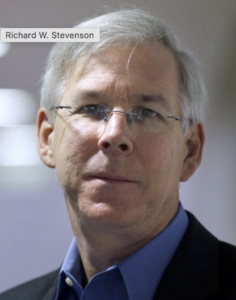 There is little question that the news media have been severely disrupted over the past two decades. New gathering has suffered from a broad loss of faith in institutions, including established media. While social media and the siloing of new sources and their discrete audiences have challenged basic tenets of news gathering, the New York Times has also found ways to enhance the publication of news and its understanding with a comprehensive digital strategy. A former managing editor of the Times suggested the newspapers may be in a slump, but journalism, in all its forms, has never been more robust.
There is little question that the news media have been severely disrupted over the past two decades. New gathering has suffered from a broad loss of faith in institutions, including established media. While social media and the siloing of new sources and their discrete audiences have challenged basic tenets of news gathering, the New York Times has also found ways to enhance the publication of news and its understanding with a comprehensive digital strategy. A former managing editor of the Times suggested the newspapers may be in a slump, but journalism, in all its forms, has never been more robust.
Dick Stevenson is currently the Washington editor in the Washington bureau of the New York TImes; he had had a particular focus on the Supreme Court.
Dick joined The Times in 1985 as a reporter trainee in BizDay. He went on to become a correspondent in the Los Angeles bureau from 1986 to 1992, and in London from 1992 to 1996. He then came to Washington, where he covered economics and then the White House before becoming deputy bureau chief in 2006, a role he held until 2011. He was also politics editor for the 2008 and 2012 cycles.
In 2013, he served as Europe editor, first in Paris, where he oversaw the International Herald Tribune’s transition into The New York Times International Edition, and then in London. After a stint working in New York, he returned to the Washington bureau as enterprise editor.
He was educated at the University of Pennsylvania and the London School of Economics.
Summary
Dick Stevenson, Washington Editor for The New York Times, delivered a talk addressing key challenges and transformations in journalism over the last two decades. He highlighted the broad disruption caused by the rise of social media, polarization, and loss of faith in traditional institutions. Despite these challenges, The New York Times has thrived by adopting a comprehensive digital strategy that includes reaching a global audience of over 10 million subscribers.
Stevenson discussed how traditional news models have been affected by the decline of local journalism, the collapse of business models for many newspapers, and the impact of new technology. While journalism itself is flourishing, the business of newspapers remains under strain. Local news, essential for accountability, is particularly endangered, with many counties in the U.S. having limited or no access to reliable news sources.
Another core theme was the polarized and tribal nature of today’s society. Stevenson remarked on the fracturing of shared reality, where individuals choose their own facts and news sources, leading to diminished trust in the media. Social media, misinformation, censorship, and political assaults on journalists compound the difficulties in maintaining journalistic integrity. Stevenson emphasized The New York Times’ commitment to independence and to reporting the facts as they are, even when these facts contradict popular narratives or political positions.
Stevenson highlighted the paper’s role in covering major political figures such as Trump and Biden. He explained how the paper has approached covering controversial topics like Biden’s cognitive abilities and Trump’s inflammatory rhetoric, striving to remain factual and analytical.
In addition to its core mission of delivering news, The New York Times has expanded into areas such as lifestyle, sports, and games, offering content that engages readers across multiple interests. The paper’s acquisition of The Athletic for sports coverage and the popularity of its games, such as Wordle, are key parts of this strategy.
Stevenson expressed optimism about the future of journalism, recognizing the opportunities provided by digital platforms and the broader reach that comes with them. However, he also acknowledged the risks of increasing polarization, tribalism, and the potential erosion of democratic norms if trust in journalism continues to decline. The constant need for reinvention, cultural adaptation, and technological integration remains a challenge for The Times and the news profession as a whole.
The talk concluded with a Q&A session, where Stevenson addressed issues like disinformation, the role of anonymous sources in journalism, and the potential long-term futures for the media industry. He also fielded questions on the relationship between journalism and politics, noting the complexities of media influence in Washington, and the shifting relationship between journalists and political figures who increasingly rely on alternative platforms for communication.
